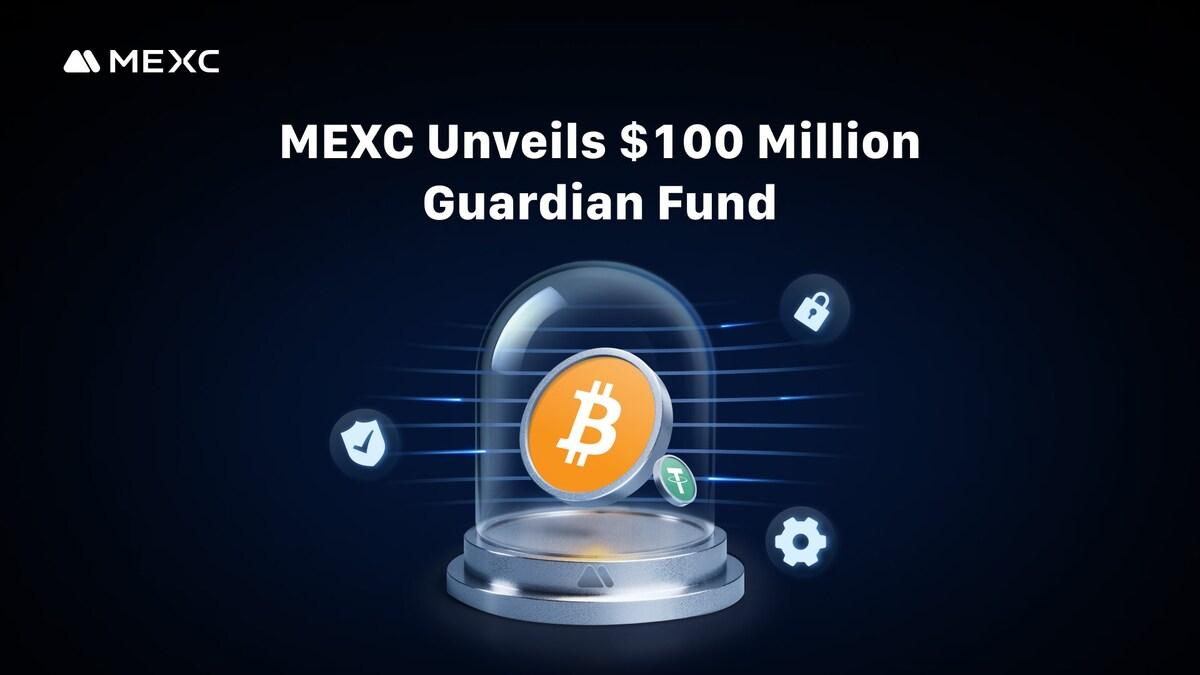BitcoinWorld

Bitcoin VIX Correlation: Unveiling a Crucial Shift in Crypto Market Dynamics
Have you ever wondered if Bitcoin, often touted as a decentralized disruptor, is truly immune to the tremors of traditional finance? Recent data suggests a fascinating and crucial shift is underway, challenging long-held assumptions. The Bitcoin VIX correlation, a key indicator of how Bitcoin’s volatility aligns with that of the broader market, has just hit an unprecedented all-time high. This isn’t just a technical blip; it signals a profound evolution in how Bitcoin behaves and interacts with the global financial system.
Understanding the Alarming Bitcoin VIX Correlation
At its core, a correlation coefficient measures the degree to which two variables move in relation to each other. A value of 1.0 indicates a perfect positive correlation, meaning they move in lockstep. A value of -1.0 signifies a perfect negative correlation, moving in opposite directions. A value of 0 suggests no linear relationship at all.
- The Record Breaker: The 90-day correlation coefficient between Bitcoin’s 30-day implied volatility (IV) indices (from platforms like Deribit and Volmex) and the S&P 500 volatility index (VIX) has recently soared to an astounding 0.88. This figure, reported by CoinDesk citing TradingView data, is not just high; it’s an all-time high.
- Bitcoin’s IV: Think of Bitcoin’s implied volatility as the market’s expectation of how much Bitcoin’s price will fluctuate in the future. It’s derived from options prices on exchanges like Deribit and Volmex, giving us a forward-looking view of anticipated price swings.
- The VIX: Often dubbed the ‘fear gauge’ of Wall Street, the VIX measures the expected volatility of the S&P 500 index over the next 30 days. When the VIX is high, it generally indicates investor anxiety and anticipation of significant market turbulence in traditional stocks.
The fact that these two distinct measures of market uncertainty are now moving so closely together suggests that Bitcoin’s volatility dynamics are increasingly mirroring those of traditional equities. This convergence implies that when traditional markets experience heightened uncertainty, Bitcoin’s expected volatility tends to follow suit. But why is this happening now?
Why is Institutional Adoption Fueling the Bitcoin VIX Correlation?
The primary driver behind this remarkable shift, according to Markus Thielen, founder of crypto research firm 10x Research, is the increasing participation of institutional investors in the crypto market. This isn’t just about big money entering; it’s about how that money operates.
Historically, Bitcoin’s price movements were largely driven by retail sentiment, often characterized by rapid, unpredictable swings. However, the landscape has changed dramatically:
- Sophisticated Players: We’re talking about hedge funds, asset managers, pension funds, and even sovereign wealth funds. These entities bring with them sophisticated trading strategies, risk management protocols, and a deep understanding of traditional market dynamics.
- Volatility Sellers: A key aspect Thielen highlights is the presence of ‘volatility sellers’ among these institutions. In traditional markets, selling volatility (e.g., selling options) is a common strategy to generate income, especially in periods of perceived stability. As institutions enter the Bitcoin market, they bring these strategies with them. When they sell Bitcoin options, they effectively bet on lower future volatility, which can suppress Bitcoin’s implied volatility and align it more closely with broader market trends.
- Arbitrage Opportunities: Institutions are also adept at identifying and exploiting arbitrage opportunities between different markets. As Bitcoin becomes more liquid and accessible through regulated products (like spot Bitcoin ETFs), it becomes easier for these players to bridge the gap between crypto and traditional finance, further intertwining their behaviors.
This influx of institutional capital and trading expertise is essentially ‘maturing’ the Bitcoin market. It’s becoming less of a wild frontier and more of a structured, predictable asset class, albeit with its unique characteristics. This convergence in market behavior naturally leads to a stronger Bitcoin VIX correlation.
What Does This Strong Bitcoin VIX Correlation Mean for Investors?
The implications of this record-high correlation are profound, reshaping how investors should view and interact with Bitcoin. It challenges some long-held narratives and opens new considerations for portfolio management.
Is Bitcoin Still a Safe Haven or a Diversifier?
For years, one of Bitcoin’s appealing qualities was its perceived low correlation with traditional assets. Many investors saw it as a potential ‘digital gold’ – a hedge against inflation or a safe haven during economic turmoil. This high Bitcoin VIX correlation directly questions that narrative:
- Loss of Decoupling: If Bitcoin’s volatility mirrors that of the S&P 500, it suggests that during periods of high traditional market stress (when VIX spikes), Bitcoin’s own volatility is likely to increase. This reduces its effectiveness as a pure diversifier or safe haven, as both asset classes might experience turbulence simultaneously.
- Increased Sensitivity to Macro Factors: Bitcoin becomes more susceptible to global macroeconomic events, central bank policies, and geopolitical tensions that typically influence traditional markets. Investors must now pay closer attention to these broader economic indicators when assessing Bitcoin’s risk.
A More Mature, Integrated Asset Class
While challenging for some, this increased correlation also signifies a significant step towards Bitcoin’s integration into mainstream finance. It suggests:
- Mainstream Acceptance: Institutional adoption means more liquidity, more robust infrastructure, and greater acceptance by traditional financial players. This could pave the way for more sophisticated financial products and broader investor access.
- Predictability (to a degree): As Bitcoin’s behavior aligns more with traditional assets, its volatility might become somewhat more predictable, at least in relation to known market indicators like the VIX. This doesn’t mean less volatility overall, but perhaps a more understandable volatility.
Navigating the Evolving Landscape: Challenges and Opportunities
The record Bitcoin VIX correlation presents both hurdles and exciting prospects for market participants.
Key Challenges:
As Bitcoin increasingly dances to the tune of traditional markets, investors face new considerations:
- Synchronized Downturns: The risk of Bitcoin experiencing significant downturns concurrently with stock market crashes increases. This can impact portfolio diversification strategies that relied on Bitcoin’s independent movement.
- Complex Risk Management: Managing risk in a portfolio that includes both traditional assets and Bitcoin becomes more intricate, requiring a deeper understanding of inter-market correlations.
- Narrative Shift: For long-term Bitcoin maximalists, the idea of Bitcoin losing its ‘anti-establishment’ or ‘decoupled’ status might be a philosophical challenge.
Exciting Opportunities:
However, this evolution also brings forth significant advantages:
- Enhanced Liquidity: Institutional involvement generally leads to deeper order books and reduced slippage, making it easier for large trades to execute without significantly impacting prices.
- New Financial Products: The growing integration can spur the creation of more sophisticated financial instruments, such as futures, options, and structured products based on Bitcoin, catering to a wider range of investment strategies.
- Increased Legitimacy: As Bitcoin’s market behavior converges with traditional assets, it gains further legitimacy in the eyes of regulators, institutional investors, and the broader public, potentially attracting even more capital.
- Arbitrage and Hedging Strategies: For sophisticated traders, the strong Bitcoin VIX correlation opens up new avenues for arbitrage between crypto and traditional markets, as well as more effective hedging strategies.
Understanding this evolving relationship is paramount for making informed decisions in the fast-paced world of digital assets.
A Compelling Conclusion: Bitcoin’s New Era
The astounding 0.88 Bitcoin VIX correlation is far more than a mere statistical anomaly; it is a powerful testament to Bitcoin’s journey from a niche digital experiment to a significant, integrated player in the global financial arena. While it may challenge the long-held notion of Bitcoin as a completely uncorrelated asset, it simultaneously signals its maturation and growing acceptance by institutional giants. This shift means that Bitcoin’s future price action and volatility will likely be more intertwined with macroeconomic forces and traditional market sentiment than ever before. For investors, this calls for a nuanced approach, one that recognizes both the immense potential of digital assets and their increasingly complex relationship with the established financial order. As Bitcoin continues to evolve, adapting your investment strategy to these new correlations will be key to navigating its dynamic future.
Frequently Asked Questions (FAQs) About Bitcoin’s Volatility
- What is the Bitcoin VIX correlation?
- The Bitcoin VIX correlation measures how closely Bitcoin’s implied volatility (expected future price swings) moves in relation to the S&P 500’s volatility index (VIX), often called the “fear gauge” of traditional markets.
- Why has the Bitcoin VIX correlation hit an all-time high?
- The primary reason is the increased participation of institutional investors in the crypto market. These sophisticated players bring traditional trading strategies, including volatility selling and arbitrage, which influence Bitcoin’s market behavior and make it more aligned with traditional finance.
- Does a high correlation mean Bitcoin is no longer a good diversifier?
- A high correlation suggests that Bitcoin’s volatility may now move in sync with traditional market volatility during periods of stress. While it might reduce its effectiveness as a pure uncorrelated diversifier, it also signifies its integration into mainstream finance, potentially leading to more stability and liquidity in the long run.
- How does institutional involvement affect Bitcoin’s implied volatility?
- Institutional investors, particularly those engaged in volatility selling, can contribute to a general reduction in Bitcoin’s implied volatility by taking positions that profit from stable or less volatile markets. This can lead to Bitcoin’s volatility becoming more subdued and predictable over time.
- What should investors do given this strong correlation?
- Investors should consider monitoring global macroeconomic indicators, diversifying their portfolios thoughtfully, and understanding that Bitcoin’s risk profile is evolving. It’s crucial to adapt investment strategies to account for Bitcoin’s increasing interconnectedness with traditional financial markets.
Did this article shed light on Bitcoin’s evolving market dynamics? Share your thoughts and insights with your network! Help us spread awareness about the crucial shifts happening in the crypto world by sharing this article on your favorite social media platforms.
To learn more about the latest Bitcoin market trends, explore our article on key developments shaping Bitcoin’s institutional adoption.
This post Bitcoin VIX Correlation: Unveiling a Crucial Shift in Crypto Market Dynamics first appeared on BitcoinWorld and is written by Editorial Team





